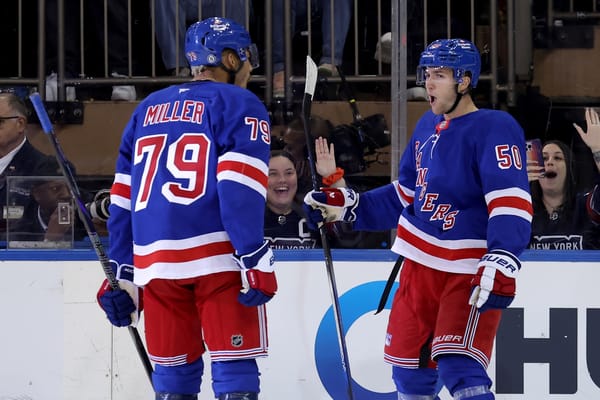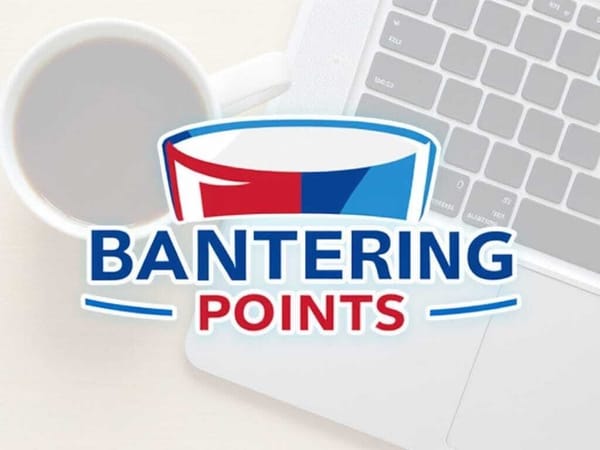Alain Vigneault Finally Acknowledges Shortcomings of Tanner Glass
It certainly feels like virtually everyone has come to the same conclusion regarding Tanner Glass and his ability - or lack thereof - to help the Rangers win hockey games. Alain Vigneault, the proverbial last line of defense, has for the first time admitted his possession deficiencies.
Twenty-four weeks. Five-and-a-half months. One hundred and sixty-eight days. That is how much time has passed since July 1st, 2014 up until yesterday. And that's how long it took, ever since the Rangers signed Tanner Glass on the first day of free agency, for Alain Vigneault to vocalize an any awareness of Glass' inability to contribute to a winning hockey team in a meaningful way.
Derek Stepan was injured in the Rangers' underwhelming loss to the New York Islanders on Tuesday. Fortunately, he's listed as day-to-day and should miss two or three games at most. But with 12 remaining healthy forwards on the roster, it ensures that Tanner Glass will suit up for the first time in 17 days as the Rangers take on the Boston Bruins tonight. The media asked Vigneault about Glass' return yesterday at practice, and here is what Vigneault had to say.
"In my estimation, as much as he was working hard and trying to contribute... when I used the other guys I thought they were giving us a little bit more," Vigneault said. "Now he's getting an opportunity to come back. I'm confident he's going to give everything he has and hopefully that's going to be good, and good enough to keep him in the lineup."
When asked what specifically Glass needs to do better, Vigneault responded with an awareness of what everyone has known for some time.
"When he's on the ice with his lines we need to spend a little bit of time in the offensive zone, you know, and he's aware of that," Vigneault stated. "I know what he can bring. He's hard on the forecheck, he finishes, he goes to the net hard, but we need to spend a little bit more time with the puck in any zone (rather) than chasing the puck."
Glass had been a healthy scratch for six straight games following his disastrous performance in Dallas, so obviously Vigneault demonstrated to some degree that he wasn't exactly ecstatic about Glass' play. Still, that could have easily been justified with his usual vague narrative about "the right fit" for each individual game or riding a lineup on a hot streak and nothing more. Instead, Vigneault displayed knowledge of Glass' specific deficiencies. The message since Glass signed with the team is that Glass brings "other things" to the table; energy and playing "hard" were the abstract things he contributes that make him a valuable commodity on the fourth-line. Now, Vigneault is acknowledging that trying hard is not, in itself, good enough. And most importantly, that Glass has been a black hole for possession.
"I would love for someone to come up with an analytic number for grit, because grit matters."
That is what Pierre McGuire said on TSN Radio back in September. It's a curious statement from McGuire for a number of reasons. The implication from McGuire is pretty clear; analytics are one thing, and grit is another. The two are mutually exclusive entities. Analytics can't and don't account for "grit." That's more or less the argument used by many defenders of "energy" players with poor possession stats. My guess is that, when some people see the word "possession," they instantly think of Pavel Bure and Bobby Orr skating around and playing keepaway with the puck for an entire shift.
That's not what possession metrics measure. The most popular possession metric, Corsi, is literally just a fancy name for "shot attempts." If your team shoots more than the other team while you're on the ice, then presumably the puck is in the offensive end more than your own end. Other way around, and you're probably pinned in your own end a lot.
And that's where McGuire's request falls short. It's a total non-sequitur. Analytics aren't a measure of one specific playing style. You can be a small, speedy forward. You can be an average sized pure playmaker. You could be 220 pounds of pure muscle and hustle. The goal of hockey is to score more than the opposition, and a huge component of that is obviously having the puck more than the opposition. If you help your team have the puck more than the opposition, then you're a good hockey player. The methods in which you make that happen - speed, forechecking, hustle, vision, etc. - are just a means to an end.
Want proof? Look around the league. Nobody would mistake Scott Hartnell for being a finesse player. He can shoot pretty well and he's not a lost cause in terms of skating, passing, and so on. But he's, at best, average in those aspects. And yet, he's a +5.4% Corsi Relative for the Blue Jackets this season. That's not a fluke, as Hartnell was above average possession player over the entire span of his time with the Philadelphia flyers; a 50.5% Corsi and a +2% Corsi Relative. Andrew Ladd is another player like this. A pure power forward, and yet he's a 53.2% Corsi since the 2011-2012 season.
An even more extreme example of this is Anaheim Ducks forward Patrick Maroon. Have you ever seen Patrick Maroon play? He's a 6'3, 230-pound oaf. He's, at best, a mediocre skater. He's far from brilliant with the puck on his stick. The guy would wholly embarrass himself in a skills competition. And yet, he's fantastic. Despite starting pretty often in the defensive zone, Maroon has a 53% Corsi this season, compared to the 51.6% the Ducks average with him off the ice. And it's not a single-season fluke, either. Last season the Ducks were a 54% Corsi with him on the ice. How does he do it? Definitely not by carrying the puck around. He forechecks well. He reads the game well. He forces turnovers. He wins puck battles. He's able to receive passes and make simple, yet rational and effective decisions with the puck. Obviously players like Perry and Getzlaf lead the way for Anaheim, but having a player like Maroon who can keep the puck in the opposition's end in fourth-line minutes is certainly of value to Bruce Boudreau and is a reason why Anaheim is a great team instead of merely a good one.
The absolute best example, to win the hearts and minds of Rangers fans, is Sean Avery of all people. He was the total package in terms of "grit" and "hustle" and "energy" and "momentum." Sean Avery accumulated a 52.9% Corsi in his career with the Rangers. The lowest he was in any individual season with the team was 49.7% in 2010-2011, and since 2005 he ranks ninth among all Rangers forwards in Corsi Relative.
On the other hand, there are a good share of "skill" players with terrible possession numbers. Erik Christensen is one of the most gifted players to wear a Rangers' uniform the last decade in terms of some of the things he could do with the puck on his stick. It didn't matter, though. He still possessed a dreadful 46.6% Corsi as a Ranger and was 45.7% over his entire NHL career. It's a similar case for Chris Mueller, who has been elite playmaker in the AHL but, in his NHL call-ups, owns a 45.7% Corsi. Chuck Kobasew was drafted 14th overall by the Calgary Flames and even had a few 20-goal seasons in the NHL. Dating back to 2005, his numbers are a 45.8% Corsi and a -4.4 Corsi Relative. Vincent Lecavalier, with a 45.2% Corsi and a -4.4 Corsi Rel, has been one of the worst Flyers forwards this season. And so on.
Hartnell, Maroon, and Avery are only a few examples of "grit" players who do well. Pierre is technically correct in that there's no analytic measuring "grit." That's completely besides the point, though. There's no analytics that measures skating ability, or vision, or ability to screen the goalie, or passing quality, or anything else. Analytics do not measure skill; they measure influence and results. If Tanner Glass' willingness to be "hard on the forecheck" and "go to the net hard" as Vigneault describes - and to bring "grit" and "energy" and "toughness" or whatever abstract buzzword you want to apply - had a positive impact, then it would manifest in the statistics just as it does for Hartnell, Maroon, Avery, and so on. Putting Glass in the lineup for the sake of "grit" and "energy" and "toughness" is roughly equivalent to putting a lefty in your bullpen who gets shelled every appearance just for the sake of having a lefty in the bullpen. Or playing a wide receiver who is constantly offsides, constantly runs the wrong routes, and can't catch the ball just because he has a good 40-yard dash time. What good are those individual attributes if they don't actually accomplish anything? If Glass was a good forechecker, then it would mean him preventing the opposition from exiting the zone with the puck. If Glass was able to do anything of significance while crashing the net, then it would mean the Rangers getting more shot goals through screens and rebounds and such; the Rangers have literally one goal the entire season with Glass on the ice. If Glass was a good penalty killer, then it would mean him suppressing the number of shots that reach the goaltender and killing time by holding the puck in the opposition's end; Glass is the second-worst forward on the team in that regard this season. If the things Tanner Glass supposedly brings to the table actually had a positive impact, then he wouldn't be literally the only forward in the NHL who has been on the ice for one or fewer even strength goals for as well as 13 or more even strength goals against. Let me repeat that in big, bold letters. No forward in the NHL has a worse ratio of goals for vs goals against this season than Tanner Glass. In fact, no other forward comes even remotely close.
Analytics are not against "grit." They're simply in favor of possession. The other team can't score when you have the puck. You can't score when the other team has the puck. This is very basic stuff that most 10-year-old's would be able to grasp, and it's no coincidence that teams win games more often than not when they win the possession battle. Nobody would accuse Glass of being a bad person. Or not trying hard enough. I'm sure he's absolutely desperate to make a difference and help the team. At the end of the day, though, this is a results business, and Tanner Glass has not delivered results. Not recently, not this season, and not his entire career.
We can harp on the fact that Glass is still signed to a silly contract for two more seasons. We can question why it took Alain Vigneault this long to face reality. We can question why players like Miller, Fast, and Duclair were forced out of the lineup in favor of Glass despite it obviously being a poor decision. And we can therefore question why he'll be playing again tonight against Boston instead of a player like Oscar Lindberg or Ryan Bourque. For now, though, let's be grateful for Vigneault finally looking at the situation rationally and seeing it for what it is. Actions speak louder than words, obviously, and everything he's said will mean nothing if goes back to reflexively throwing Glass in the lineup when one of Fast, Miller, or Stempniak inevitably have a bad game or when the Rangers have an off-night. But it's a start. The first step in solving any problem is admitting you have one, as the saying goes. There will inevitably come a time where Vigneault stops making excuses for Glass and cuts his losses; he's too intelligent of a hockey coach not to. It's just a question of how soon that will come.




